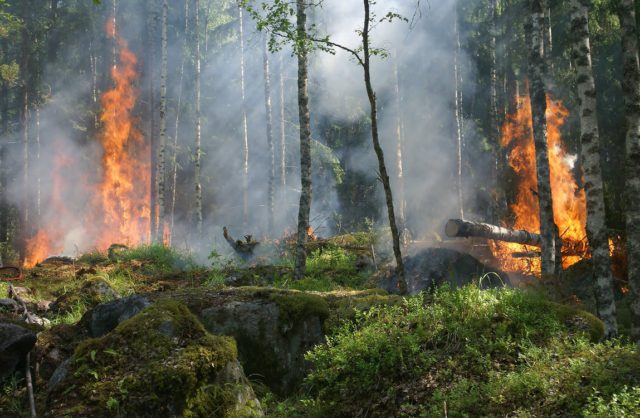Wildfires have just hit Australia and Brazil in 2019 through early 2020, leaving thousands forced to flee their homes and dozens of people dead.
However, as fires spread around the world, burning large forests contributing as an ecosystem of many plants and wildlife on the brink of extinction, regulating the climate worldwide, the Amazon rainforest, for example, the questions and misconceptions about them will increase.
Here are five common things about wildfires that you should know, and some of them can jeopardize our success in controlling wildfires.

Cutting down trees does not prevent wildfires
In fact, many forestry experts say that cutting down trees is not effective. That is explained as remnants of trees left after being cut, such as stumps and branches, for example, are very sharp fuel for fires – and they are even drier (and more flammable) when not having canopy trees. Cutting trees after burning will backfire and cause more fire to occur.
Scholars of conservation in forest fires also reject the argument that cutting trees helps protect endangered species from being trapped in wildfires. In fact, some animals, like the owl, still benefit from burnt forests, so cutting down trees can harm them.
A common practice for firefighters is to cut down an entire forest area to prevent the spread of fire.
Burt forests will recover after the fire. After the wildfire in Australia has been extinguished in early 2020, the forest after the fire has miraculously recovered.
We can act to protect our assets
Forest fires are very fierce and threaten to be dangerous, but families can reduce the risk by taking action. Your house is the first priority. Homes with fireproof roofs have a better chance of surviving the fire. Remove explosive materials around your home, including leaves in drains and gutters.
Create a protective area between the house and the surrounding forest by clearing anything that can catch fire, such as bushes, dry leaves, and woodpiles within 9 meters around the house.
If the trees are 9 to 18 meters away from the house, then the gap between the canopy needs a distance of 3.6 meters. If the tree is 18 meters or more from your house, the distance should be 1.8 meters. This will disrupt the path of the fire and reduce its speed.
Wildfires is something that can be prevented
Although wildfires are a natural phenomenon, the extent and intensity of fires occurring today are no longer normal.
Today, as the climate has become hotter and drier over the past four decades, the number of fires has increased. While you can’t think of climate change as the cause of any wildfires, its factors such as heavy drought, high temperatures, low humidity, and strong winds leading to spreading wildfires.
Not all wildfires are bad and need to be put out immediately
Forest fires have played an important role in ecosystems for thousands of years, and life has evolved along with wildfires. For example, the pine cones sprout in fires and the space cleared from burned trees facilitates the emergence of new plants.

In fact, instead of cutting down the dense forests forest management was naturally done through wildfires. But given the limited area of forests we have now, this “purification” has been prevented, less than 1% of US forest fires are allowed to burn.
We cannot control all wildfires
As we have seen, climate change, along with other factors such as population growth, is predicted to increase wildfires.
Areas in the middle to high latitudes will face more forest fires. The tropics will probably reduce wildfires, and there is a tendency to reduce forest fires.
Many fires occur too quickly to control them. At that time, evacuating and sending people to other places was the only reasonable solution.
The question is whether residential areas that were almost burnt by fires should remain in their original locations or need to be relocated. Traditional knowledge of indigenous people in dealing with forest fires is recommended.
The forest fires are getting worse, which is the problem that policymakers have to face and solve.
